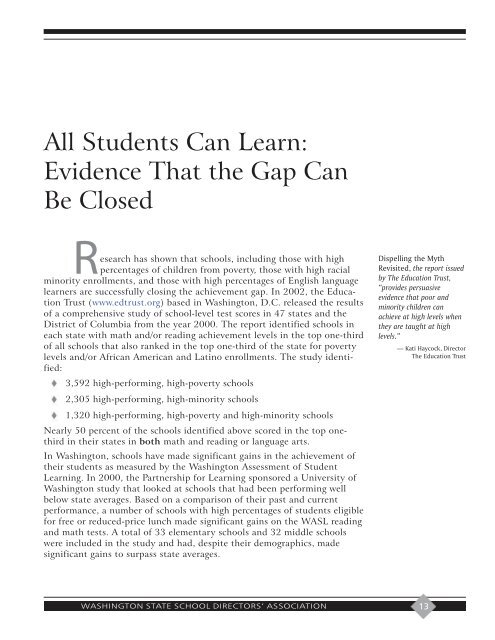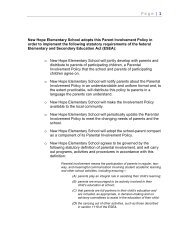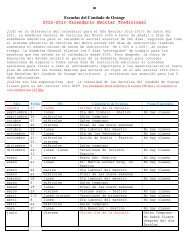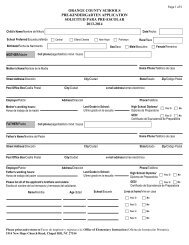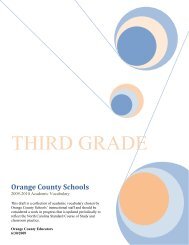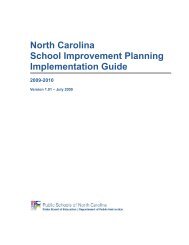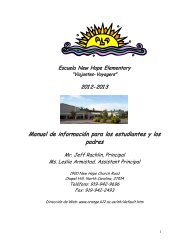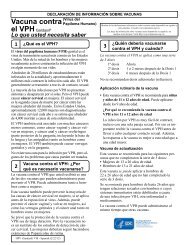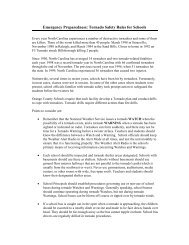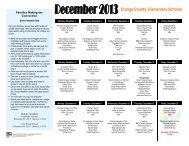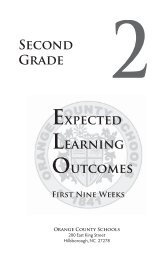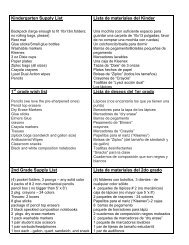Closing the Achievement Gap - Washington State School Directors ...
Closing the Achievement Gap - Washington State School Directors ...
Closing the Achievement Gap - Washington State School Directors ...
Create successful ePaper yourself
Turn your PDF publications into a flip-book with our unique Google optimized e-Paper software.
All Students Can Learn:Evidence That <strong>the</strong> <strong>Gap</strong> CanBe ClosedResearch has shown that schools, including those with highpercentages of children from poverty, those with high racialminority enrollments, and those with high percentages of English languagelearners are successfully closing <strong>the</strong> achievement gap. In 2002, <strong>the</strong> EducationTrust (www.edtrust.org) based in <strong>Washington</strong>, D.C. released <strong>the</strong> resultsof a comprehensive study of school-level test scores in 47 states and <strong>the</strong>District of Columbia from <strong>the</strong> year 2000. The report identified schools ineach state with math and/or reading achievement levels in <strong>the</strong> top one-thirdof all schools that also ranked in <strong>the</strong> top one-third of <strong>the</strong> state for povertylevels and/or African American and Latino enrollments. The study identified:3,592 high-performing, high-poverty schools2,305 high-performing, high-minority schools1,320 high-performing, high-poverty and high-minority schoolsNearly 50 percent of <strong>the</strong> schools identified above scored in <strong>the</strong> top onethirdin <strong>the</strong>ir states in both math and reading or language arts.In <strong>Washington</strong>, schools have made significant gains in <strong>the</strong> achievement of<strong>the</strong>ir students as measured by <strong>the</strong> <strong>Washington</strong> Assessment of StudentLearning. In 2000, <strong>the</strong> Partnership for Learning sponsored a University of<strong>Washington</strong> study that looked at schools that had been performing wellbelow state averages. Based on a comparison of <strong>the</strong>ir past and currentperformance, a number of schools with high percentages of students eligiblefor free or reduced-price lunch made significant gains on <strong>the</strong> WASL readingand math tests. A total of 33 elementary schools and 32 middle schoolswere included in <strong>the</strong> study and had, despite <strong>the</strong>ir demographics, madesignificant gains to surpass state averages.Dispelling <strong>the</strong> MythRevisited, <strong>the</strong> report issuedby The Education Trust,“provides persuasiveevidence that poor andminority children canachieve at high levels when<strong>the</strong>y are taught at highlevels.”— Kati Haycock, DirectorThe Education TrustWASHINGTON STATE SCHOOL DIRECTORS’ ASSOCIATION13


